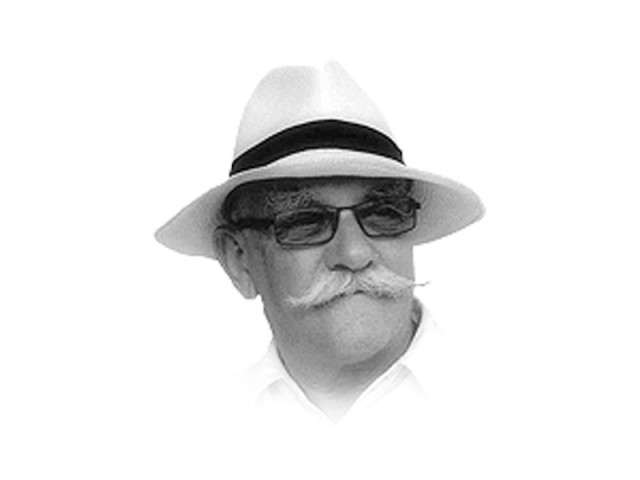The Big Little
People selling colouring books at traffic signals have businesses that are their personal equivalent of a start-up

The writer is editorial consultant at
The Express Tribune, news junkie, bibliophile, cat lover and occasional cyclist
These smaller versions of Trump and Branson can be seen in the urban environment at traffic lights, or vending their wares at busy chowks that can be anything from pink inflatable toys with a life measured in hours (Bahawalpur in the last week) to balloons to obscure and dubious remedies for a range of ailments and physical conditions.
These are the men and women that make up the poverty economy, who eke out a tiny living that is above beggary and below the formal jobs market, who as entrepreneurs invest miniscule sums in the hope and expectation of making a bread-on-the-table return, possibly bankrolled by a slightly richer person higher up the scale in the poverty economy to whom they give a cut of whatever small profit they make. Some of them are undoubtedly victims of exploitation, particularly the children with their screen-washing services and the plaintive calls to buy colouring books — but for some this is their personal equivalent of a start-up, not exactly Silicon Valley and The Next Big Thing but perhaps the precursor to a tiny stall at the roadside selling sweets and matches.
My first contact with the poverty economy was in the Middle East: Lebanon in the ‘80s where shrapnel was being hawked at traffic lights — where there were traffic lights — but like most of us that were passing through it was not recognised as anything more than what it appeared to be at first sight. Then Egypt and Syria in the ‘90s before Pakistan in ‘95 and the Blind Balloon Man.
Looking back, it was the Blind Balloon Man that helped me get a glimmer of understanding. I came across him at dead of night in Saddar, Rawalpindi as I was walking back to my hotel. He had a hand-cranked three-wheeler that he trundled down the middle of the road. And a lot of balloons. He was, I discovered, almost completely blind and had plied his trade, presumably not very profitably, for many years. He was not a beggar, he was in business, making a paisa or two to put on the table.
But back to Bahawalpur and the local poverty economy which, the scales now fallen from my eyes, I now see as positively thriving, vibrant even, and emerging as an equal-opportunities niche as women have begun to appear (… yes, the pink inflatables) in this strata of very poor entrepreneurs. These are micro-traders, perhaps people who might qualify for a microfinance loan to give a boost to their start-up and take them the next step along the road. To owning the factory that makes the balloons, perhaps.
Perhaps I am being overly optimistic, and the reality is that the vendors I see are all in the clutches of some venal Shylock who will wring their last rupee from them at the end of every long day — but I suspect not in every case, and not every entrepreneur operating in the world beyond the poverty economy makes a killing with every punt they take.
There is a busy shop in my home village that started life as a tray of toys around the neck of the youth who tramped miles to harvest a pittance. After a couple of years he bought a cupboard and sold sweets as well. Now, he has a shop with a ‘fridge and a plan to set up another in a neighboring village. Entrepreneurs, huh?
Published in The Express Tribune, February 11th, 2016.
Like Opinion & Editorial on Facebook, follow @ETOpEd on Twitter to receive all updates on all our daily pieces.













COMMENTS
Comments are moderated and generally will be posted if they are on-topic and not abusive.
For more information, please see our Comments FAQ